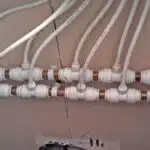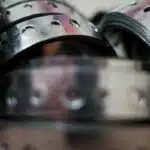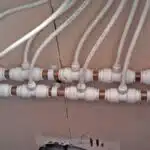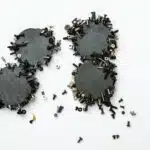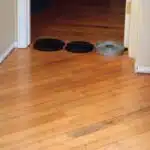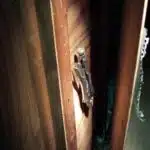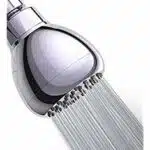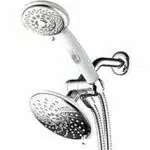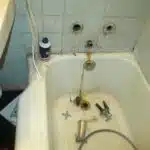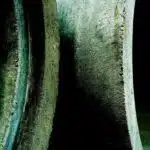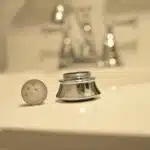As a plumbing expert, I have seen firsthand the consequences of poorly sealed joints in plumbing systems. Leaks can cause significant damage to buildings and homes, leading to costly repairs and even health hazards. That is why it is essential to use proper sealing materials to prevent leaks, such as pipe dope.
Pipe dope, also known as thread sealant or pipe joint compound, is a paste-like substance used to seal the threaded connections between pipes and fittings. It creates a tight seal that prevents water and gas from leaking out of the system. While there are other sealing methods available, such as Teflon tape or pipe dope combined with Teflon tape, pipe dope alone is an effective solution for most plumbing applications. In this article, we will explore why using pipe dope can prevent leaks in plumbing joints and how to apply it correctly for optimal results.
Understanding The Importance Of Properly Sealed Plumbing Joints
Plumbing joints are the connective tissues of a plumbing system, similar to how bones hold together the human body. Just as the human body needs proper maintenance to function optimally, plumbing systems require regular maintenance to prevent joint failures. The importance of properly sealed plumbing joints cannot be overstated; they ensure that water and other fluids flow freely and safely through the pipes without leakage.
One of the most common causes of plumbing joint failures is poor installation or lack of maintenance. When joints are not installed correctly, they are more likely to fail, leading to leaks and costly repairs. Additionally, over time, wear and tear can cause joints to deteriorate, making them more susceptible to failure. Regular maintenance by a licensed plumber can help identify potential issues before they become major problems.
Another common cause of plumbing joint failures is corrosion. Corrosion can occur when pipes and fittings are made from different metals that react with each other over time. This reaction can cause pipes and fittings to degrade, leading to leaks at the joints. Properly sealing these joints can help prevent leaks caused by corrosion and extend the life of your plumbing system.
Properly sealing plumbing joints is crucial for maintaining a safe and functional plumbing system. While there are various methods for sealing joints, using pipe dope is one of the most effective ways to prevent leaks. In the following section, we will discuss in detail how pipe dope works and its role in preventing leaks in plumbing joints.
The Role Of Pipe Dope In Preventing Leaks
Pipe dope plays an important role in preventing leaks in plumbing joints. It is a lubricant that creates a tight seal between the threads of pipes and fittings, preventing water from leaking out. There are different brands of pipe dope available in the market, and it is important to choose the right one for your plumbing needs.
When selecting pipe dope, it is essential to consider its composition and viscosity. Some brands contain solvents that can damage certain types of plastic pipes, while others may not be suitable for high-temperature applications. Best practices for storing pipe dope include keeping it away from direct sunlight or extreme temperatures and ensuring that the lid is tightly sealed when not in use.
In summary, pipe dope is an effective solution for preventing leaks in plumbing joints. By considering different brands of pipe dope and best practices for storing it, you can ensure that your plumbing system remains leak-free for years to come. In the subsequent section, we will discuss the different types of pipe dope available on the market and their specific uses in plumbing applications.
Different Types Of Pipe Dope And Their Uses
Pipe dope, also known as pipe thread compound, is a sealant used to prevent leaks in plumbing joints. There are different brands of pipe dope available in the market, each with its unique features and recommended applications. When selecting the right type of pipe dope for your plumbing needs, it’s essential to consider factors such as the material of the pipes, temperature range, pressure range, and compatibility with other sealants.
One common type of pipe dope is the Teflon-based compound. This type of pipe dope is ideal for use on metal or plastic pipes and fittings. It provides an excellent seal against water and gas leaks under moderate temperatures and pressures. Another commonly used brand is the Rectorseal Tru-Blu Pipe Thread Sealant. This brand can withstand high-pressure applications of up to 10,000 psi and temperatures ranging from -50°F to 400°F. It’s suitable for use on stainless steel, copper, brass, PVC, ABS, and other types of plastic pipes.
When using pipe dope, it’s crucial to follow safety precautions to prevent accidents or injury. Some recommended safety measures include wearing protective gear such as gloves and eye goggles when applying pipe dope. Avoid smoking or using any open flames around areas where you have applied pipe dope since it’s highly flammable. Additionally, ensure that you store your pipe dope in a cool dry place away from sunlight or any heat sources that may degrade its quality over time.
Next up: Safety Precautions When Using Pipe Dope
Safety Precautions When Using Pipe Dope
After learning about the different types of pipe dope and their specific uses, it is important to understand the safety precautions one must take when applying it. As a plumbing expert/professional, I cannot stress enough how crucial it is to prioritize safety measures when working with pipe dope. It is essential to use proper safety equipment such as gloves, goggles, and a respirator mask to prevent any potential risks.
One of the primary potential risks associated with pipe dope is inhalation. While applying pipe dope to plumbing joints, vapors can be released that are harmful when inhaled. Therefore, wearing a respirator mask is highly recommended as it filters out these hazardous fumes. Additionally, gloves should be worn as some types of pipe dope contain chemicals that can irritate or even burn skin on contact.
Aside from wearing protective gear, another way to ensure safe application of pipe dope is by working in a well-ventilated area. This can help minimize the risk of inhaling harmful fumes and prevent accidental fires caused by combustible vapors. With these safety measures in place, you can confidently apply pipe dope knowing that your health and safety are protected.
Moving forward into the next section about tools and materials needed for applying pipe dope, it’s important to keep in mind that proper safety measures must always be taken before beginning any project involving plumbing joints. With an understanding of the potential risks involved and appropriate safety equipment at hand, you can safely proceed with using pipe dope for leak prevention.
Tools And Materials Needed For Applying Pipe Dope
When applying pipe dope to prevent leaks in plumbing joints, it is important to have the right tools and materials on hand. One of the most critical aspects of this process is choosing the right consistency of pipe dope. This will depend on the type of pipes you are working with and the level of pressure they will be subjected to. Generally speaking, higher pressure systems will require a thicker consistency while lower pressure systems can use a thinner consistency.
Before applying pipe dope, it is essential to properly clean and prep surfaces. Failure to do so can result in leaks or other issues down the line. Start by cleaning the joint thoroughly with a rag or brush to remove any dirt, debris, or old sealant that may be present. Then, use a solvent such as acetone or rubbing alcohol to remove any remaining residue. Once the surface is clean, make sure it is completely dry before proceeding with the application of pipe dope.
In summary, choosing the correct consistency for your specific plumbing system and adequately preparing surfaces prior to applying pipe dope can help ensure a successful outcome. By following these steps carefully, you can minimize leaks and other problems that could arise due to improperly applied sealant. In the subsequent section, we will discuss in more detail how to properly prepare surfaces for optimal results when applying pipe dope.
Preparation Before Applying Pipe Dope
Preparation Steps Before Applying Pipe Dope:
To ensure a successful application of pipe dope, proper preparation is essential. The following are the best practices to follow before applying pipe dope to plumbing joints.
Clean the Threads: It is important to remove any debris or leftover tape from the threads before applying pipe dope. Use a wire brush or a cloth to clean the threads thoroughly. Any leftover debris can prevent a tight seal from forming.
Apply Teflon Tape: After cleaning the threads, wrap Teflon tape around them in a clockwise direction. This will help create a more secure seal and prevent leaks.
Check for Compatibility: Not all pipe dopes are compatible with every material used in plumbing systems. It is crucial to ensure that the chosen pipe dope is safe for use with the materials involved in your specific plumbing project.
By following these preparation steps, you can increase your chances of success when applying pipe dope to plumbing joints. It is important to take these measures seriously as any mistakes can lead to leaks and other issues down the line. With proper preparation, you can ensure that your plumbing job will hold up over time and provide reliable service for years to come.
Transition into subsequent section about ‘applying pipe dope to threads’:
Now that we have gone through the preparation steps needed before applying pipe dope, let us move on to how it should be applied properly onto threads for optimal results.
Applying Pipe Dope To Threads
During the installation of plumbing systems, pipe dope is commonly used to prevent leaks in joints. Applying techniques for pipe dope involve preparing the threads and applying an ample amount of the sealant to create a tight seal. One common mistake when using pipe dope is over-application which can cause an obstruction in pipes leading to clogging and other problems.
To begin, it is important to clean the threads before applying pipe dope. This can be done by wiping off any debris or dirt with a cloth or brush. It is also recommended to use Teflon tape as an additional measure for sealing if there are any small gaps in the threads. Once the threads are clean, apply a thin amount of pipe dope on each thread while ensuring there are no air bubbles present. This will help ensure that the joint remains secured without any leakages.
Another common mistake when applying pipe dope is using too much sealant which may lead to complications during installation. Over-application can cause excess material to flow into other parts of the piping system causing blockages or even damage. In addition, it can also make disassembling joints difficult as excess sealant hardens over time making it challenging for future repairs.
In summary, applying pipe dope to threads requires proper preparation and application techniques that ensure a secure and long-lasting joint seal. Avoiding common mistakes such as over-applying can prevent future complications in plumbing systems that might require costly repairs. The next section will discuss how to apply pipe dope specifically for compression fittings which require different techniques compared to standard threaded joints.
Applying Pipe Dope To Compression Fittings
Compression fitting maintenance is essential in preventing leaks in plumbing joints. One way to ensure a tight seal is by using pipe dope. Pipe dope is a paste-like substance that creates an additional layer of sealing between the compression fitting and the pipes. It also helps lubricate the threads, making it easier to tighten and loosen the fittings when necessary.
When applying pipe dope to compression fittings, it’s important to follow specific techniques for best results. First, clean the threads of both the fitting and the pipe thoroughly with a wire brush or sandpaper before applying any sealant. This ensures that there are no dirt, debris, or rust particles that can compromise the tightness of the joint.
Next, apply a thin layer of pipe dope on the male threads of the compression fitting with your finger or a small brush. Be careful not to overdo it as this may cause excess material to break off and obstruct flow. Screw in the fitting tightly but avoid over-tightening as this may damage the joint or strip off its threads.
To emphasize proper application techniques when using pipe dope on compression fittings:
- Always use fresh pipe dope.
- Apply only a thin layer on male threads.
- Avoid getting any sealant inside pipes or fittings.
Proper maintenance and application of pipe dope can prevent costly leaks and prolong overall plumbing system lifespan. In the next section, we will discuss how to apply pipe dope to flared fittings for optimal performance and efficiency.
Applying Pipe Dope To Flared Fittings
Flared fittings are commonly used in plumbing systems to connect pipes and tubes. The design of a flared fitting involves a cone-shaped flare at the end of the pipe, which is then inserted into a matching fitting. This creates a tight seal between the two pieces, preventing leaks. However, it is important to ensure that the flared fitting is compatible with the type of pipe being used.
When choosing a flared fitting, it is essential to check its compatibility with the type of pipe being used. Flared fittings are not suitable for use with PVC pipes or other plastic materials. This is because these materials do not have sufficient strength to withstand the pressure exerted by the flare and may cause cracking or damage to the fitting. Instead, alternative sealing methods such as thread seal tape or gaskets may be used for plastic pipes.
In summary, when working with flared fittings in plumbing systems, it is crucial to ensure that they are compatible with the pipe being used. If using plastic pipes such as PVC, alternative sealing methods should be considered instead of relying on flared fittings. By taking these factors into account, it is possible to create strong and leak-free connections in plumbing systems. In the next section, we will discuss applying pipe dope to PVC joints as another effective sealing method for plumbing systems.
Applying Pipe Dope To Pvc Joints
When preparing a PVC joint for pipe dope application, ensure that all parts are clean, free of debris, and dry.
Apply a generous amount of dope to the male end of the joint, making sure the entire threaded surface is covered.
Carefully thread the female end onto the male end and tighten with a wrench, taking care to not over-tighten the joint.
If any excess pipe dope is present, wipe it off with a clean cloth before allowing the joint to cure for the recommended amount of time.
Preparing Joints
When it comes to plumbing, one of the most common issues is leaky joints. This can be caused by poor joint alignment or lack of proper preparation before applying pipe dope. As a plumbing expert, it is important to understand the importance of preparing joints before applying any sealant.
The first step in preparing joints is cleaning the pipes thoroughly. Any debris or buildup on the pipes can cause the joint to not seal properly and result in leaks. Use a wire brush or sandpaper to remove any rust or residue from the pipe surfaces. Once clean, make sure that both pipes are dry and free of any moisture before moving on to the next step.
Another crucial aspect of joint preparation is ensuring proper alignment. Misaligned joints can create gaps or spaces where pipe dope may not effectively seal. Take time to line up pipes correctly before applying any sealant, making sure they are straight and have a snug fit. Proper joint alignment leads to a more secure connection and lessens the risk of leaks.
In conclusion, taking time to prepare joints properly is essential for preventing leaks in plumbing systems. Cleaning pipes thoroughly and aligning joints correctly sets the foundation for effective sealing with pipe dope. As a plumbing expert, prioritizing these steps will result in better performance and fewer headaches down the road for your clients.
Applying Dope
Proper joint preparation is only the first step in ensuring a secure and leak-free plumbing system. Applying pipe dope is equally crucial to achieve a tight seal between joints. Before applying dope, it is important to choose the right type of brush for the job. There are two types of brushes that can be used: a flux or acid brush and a dauber brush. Flux or acid brushes are best for applying dope to small areas, while dauber brushes are better suited for larger surfaces.
Cleaning techniques before applying dope are also essential in achieving an effective seal. As mentioned earlier, cleaning pipes thoroughly is crucial before joint preparation. However, it is also important to clean the fittings themselves before applying pipe dope. Use a clean cloth or rag to wipe away any dirt or debris from the fitting surface. Make sure that there are no remaining particles that may hinder proper sealing.
When applying pipe dope, start at the bottom of the fitting and work your way up, making sure that every part of the joint has been covered with an even layer of sealant. Do not apply too much pressure when brushing on the dope as this can cause excess material to build up inside the pipe and hinder water flow. With these steps in mind, proper application of pipe dope will ensure a secure and leak-free plumbing system for years to come.
Common Mistakes To Avoid When Using Pipe Dope
As a plumbing expert, it is important to understand the common mistakes that people make when using pipe dope. While this product is effective in preventing leaks in plumbing joints, certain errors can cause more harm than good. Overtightening and using too much product are two of the most frequent mistakes made by those using pipe dope.
To avoid overtightening, it is crucial to follow manufacturer instructions. Over-tightening can cause damage to the threads and fittings, leading to cracks and leaks. Additionally, when using too much product, it can create a mess and end up being counterproductive. Excessive application can cause blockages in pipes or lead to clogs over time.
It is important to keep in mind that pipe dope is designed to work with a specific type of joint and should not be used on all types of plumbing connections. Be sure to consult with a professional if you are unsure about which product or method will work best for your needs. By avoiding these common mistakes, you can ensure that your plumbing system remains leak-free for years to come.
Moving forward, testing for leaks after applying pipe dope is crucial to ensuring the success of your repair or installation job.
Testing For Leaks After Applying Pipe Dope
Testing for leaks after applying pipe dope is an important step in ensuring a successful plumbing job. Visually inspecting the joint can help detect any leaks or drips that may have occurred. Additionally, a pressure test using water can help identify any leaks or weak points in the joint. By performing both visual and pressure tests, a plumbing professional can detect any potential issues before they become a larger problem.
Testing Leaks Visually
Visual Leak Testing is one of the most effective Leak Detection Techniques that plumbers use to ensure their work is leak-free. This technique involves visually inspecting the plumbing joints for any signs of leakage after applying Pipe Dope. Plumbing professionals understand that even the slightest signs of leaks can cause significant water damage and incur additional repair costs.
The process of Visual Leak Testing begins with checking the joints before applying Pipe Dope to ensure they are clean, dry, and free from any debris or rust. After applying Pipe Dope, plumbers wait for a few minutes to allow it to set and then start visually inspecting every joint using a flashlight. They examine each joint closely for any signs of leaks such as drips, sweat, or discoloration around the area.
Visual Leak Testing is an essential step in plumbing work as it ensures that there are no leaks present in the system, which could cause costly water damages in the future. Although pipe dope can help prevent leaks in plumbing joints, it is crucial to conduct a thorough visual inspection after applying it. As plumbing experts/professionals, we always emphasize the importance of this testing technique to our clients and make sure that every joint is checked thoroughly before completing our work.
Testing Leaks With Water Pressure
After conducting a visual leak test, plumbing professionals often proceed with another reliable technique called Testing Leaks with Water Pressure. This method involves testing the whole plumbing system’s integrity by pressurizing it to determine if any leaks occur. The Importance of Water Pressure testing cannot be overstated as it can identify hidden leaks that may not be visible during a visual inspection.
During the water pressure test, plumbers typically shut off all faucets and valves in the house or building to isolate the plumbing system. Next, they attach a pressure gauge to the main water supply line and gradually increase the pressure until it reaches its normal range. They then monitor the gauge for several minutes to ensure that there is no drop in pressure, which could indicate a leak in the system. Common leak locations include pipes, fittings, and valves.
In conclusion, Testing Leaks with Water Pressure has proven to be an effective method of detecting leaks in plumbing systems that can save homeowners and business owners from costly repairs in the future. Plumbing experts recognize that this method is just as crucial as visually inspecting joints after applying Pipe Dope. They recommend routine testing every few years or after significant renovations or repairs have been made to ensure that all plumbing components are working correctly.
Maintenance Tips For Longevity Of Pipe Dope Seals
Proper storage of pipe dope is essential to ensure its longevity and effectiveness. It should be kept in a cool, dry place away from direct sunlight and heat sources. Exposure to extreme temperatures can cause the dope to dry out or become too thick, making it difficult to apply. Additionally, make sure that the container is tightly sealed to prevent air from entering and drying out the contents.
When applying pipe dope, there are some common mistakes that you should avoid. Firstly, do not over-apply the dope as it can squeeze out of the joint and create a mess. Secondly, do not mix different types of dope as they may react with each other causing them to lose their effectiveness. Lastly, do not use pipe dope as a substitute for Teflon tape on threads that require tape.
Taking care of your plumbing system is an important aspect of home maintenance. Following these tips for proper storage and application of pipe dope will help extend the life of your seals and prevent leaks. However, if leaks persist despite your best efforts, it may be time to seek professional help. In the next section, we will discuss when it’s necessary to call in a plumbing expert for assistance with leaky joints.
When To Seek Professional Help For Plumbing Leaks
Maintenance Tips for Longevity of Pipe Dope Seals have been discussed in the previous section. However, there are still instances where leaks occur despite following these tips. When DIY troubleshooting fails, hiring professionals is the best option.
While pipe dope can prevent leaks in plumbing joints, it is not a foolproof solution. Some leaks may result from improper installation or an underlying issue in the plumbing system. It is essential to identify and address the root cause of the problem to prevent recurring leaks. This requires expertise beyond what most homeowners possess.
Hiring professionals ensures that plumbing problems are correctly identified and resolved. Professionals have the necessary skills, knowledge, and equipment to fix complicated issues that may be beyond a homeowner’s capability. They also ensure that proper sealing techniques are used during repairs to prevent future leaks. In conclusion, when DIY troubleshooting fails, hiring professionals is an investment in preventing costly damages resulting from unresolved plumbing issues.
Conclusion: The importance of proper sealing in plumbing systems cannot be overstated as it prevents leakage and protects your property from damage caused by water accumulation over time. Homeowners should prioritize regular inspections by professionals to maintain their plumbing systems’ integrity and identify potential issues before they escalate into more significant problems. By taking proactive measures to ensure proper sealing practices are followed, homeowners can enjoy peace of mind knowing their plumbing systems are functioning optimally and protected against future damages.
Conclusion: The Importance Of Proper Sealing In Plumbing Systems
Proper sealing is a crucial aspect of plumbing systems. It ensures that there are no leaks, which can lead to costly water damage and mold growth. One effective way to prevent leaks is by using pipe dope. Pipe dope is a sealant that is applied to the threads of plumbing joints before they are screwed together.
However, it’s important to note that pipe dope is not a cure-all solution for leaky plumbing joints. While it can help prevent leaks, it won’t fix existing ones. That’s why regular maintenance and inspection of your plumbing system is essential. By catching small issues early on, you can avoid more significant problems down the line.
When it comes to plumbing repairs, homeowners may be tempted to take the DIY approach. While there are many tutorials and guides available online, it’s often best to leave complex repairs to a professional plumber. They have the expertise and specialized tools needed to identify and fix issues correctly. Plus, professional repairs come with a guarantee, providing added peace of mind for homeowners.
Maintaining properly sealed plumbing systems requires consistent effort on behalf of homeowners. The importance of regular maintenance cannot be overstated as this helps catch small faults before they become larger issues that cause costly damages. It’s also important for homeowners to know when they should call in professionals rather than attempting DIY repairs themselves because some issues require specialized knowledge and tools that only trained plumbers possess thereby ensuring proper sealing in the long run without causing further complications or additional expenses down the line.
Conclusion
Properly sealed plumbing joints are essential in preventing leaks and maintaining the integrity of your plumbing system. Pipe dope, also known as thread sealant, plays a crucial role in ensuring these joints are tightly sealed and leak-free. Different types of pipe dope exist for various applications, including high-temperature environments and potable water systems.
When using pipe dope, it is crucial to follow safety precautions to prevent any harm. The necessary tools and materials needed for applying pipe dope include a brush or rag, gloves, and eye protection. It is also important to test for leaks after applying pipe dope and maintain the seals regularly to ensure their longevity.
In conclusion, as a plumbing expert/professional, I emphasize the importance of proper sealing in plumbing systems. A leaking joint can cause significant damage to your property and increase water bills. Therefore, regular maintenance and prompt attention to any leaks are necessary to avoid costly repairs. Remember that seeking professional help is always an option when dealing with complex plumbing issues or if you lack experience in handling them yourself. By taking the necessary steps to prevent leaks and maintain your plumbing system’s integrity, you can enjoy a leak-free home for years to come.
Image Credits
- “Got a Leak? Call Peed Plumbing!” by J. Sibiga Photography (featured)


